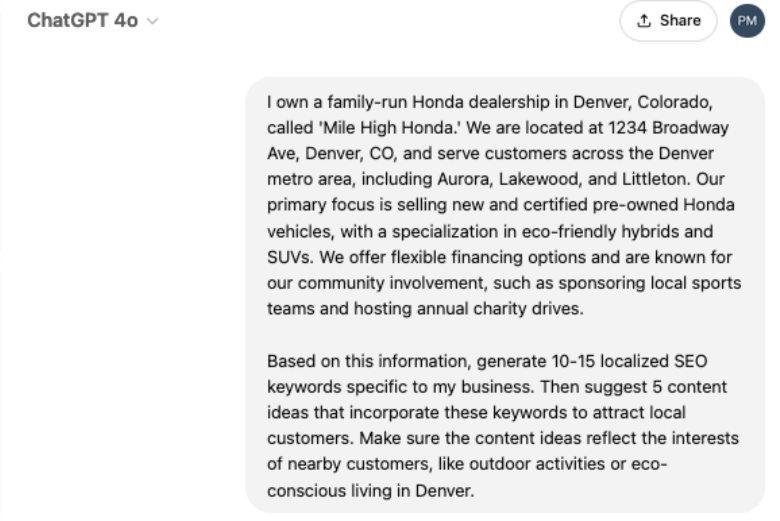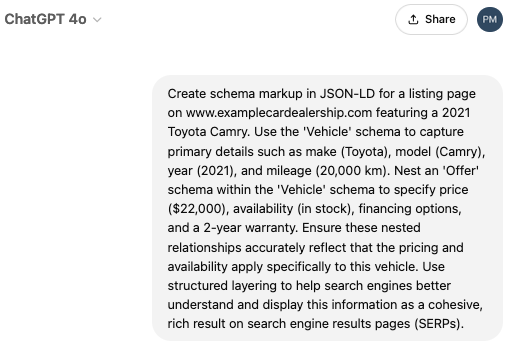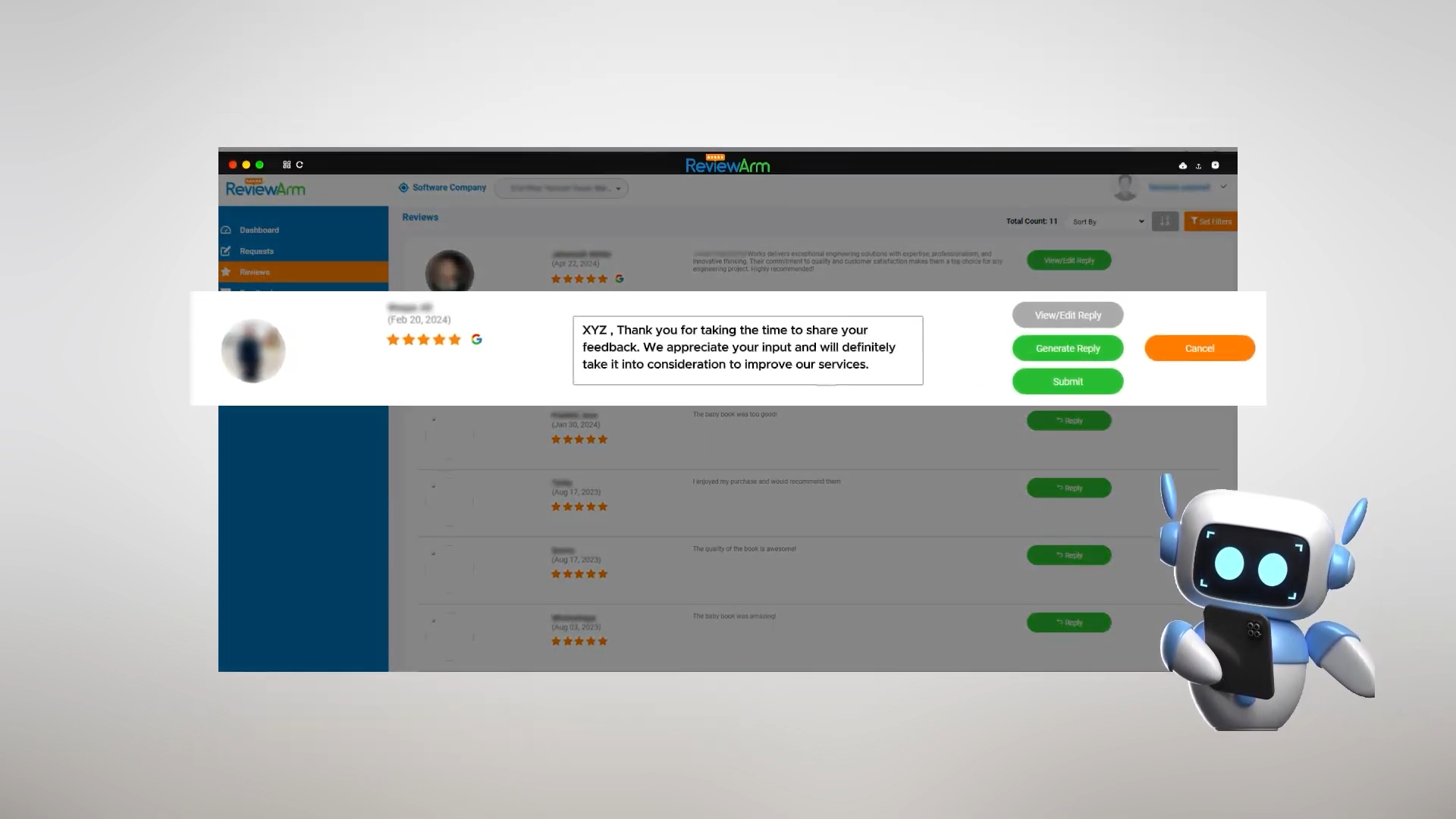4 Mistakes Car Dealerships Make In SEO (And How To Fix Them Using AI)
by
Jeremy Tang - Updated
13-Dec-2024

Car dealership SEO challenges hinder your growth. Common issues include neglecting local SEO, under-optimized inventory pages, ignoring customer reviews and lacking mobile optimization.
AI-driven solutions like local SEO automation, schema markup for vehicles and programmatic content can help you tackle these issues and boost both visibility and conversions. These strategies ensure dealerships attract local buyers, maintain high rankings and improve user experiences, driving sales growth.
Wondering how to multiply website traffic and conversions? Local SEO is the key.
In fact, ignoring local SEO tactics can be a death sentence for car dealerships.
Local SEO is all about meeting potential buyers where they are. When 46% of all searches have local intent (Source: Semrush), it’s a clear sign that a good chunk of your potential customers are actively looking for businesses close to them. For dealerships, this means showing up for the search terms that really matter: phrases like “Toyota dealership near me” or “best used cars in [City].”
And here’s the thing: the people searching for these terms are usually the ones who are ready to make a purchase.
If you neglect local SEO, you’re essentially telling these high-intent customers to look elsewhere. On the flip side, targeting location-specific keywords ensures you’re capturing the attention of people who are primed to visit your lot, test-drive vehicles and seal the deal. If your dealership isn’t optimizing for these searches, your competitors surely are – and they’re likely reaping the rewards.
So, the question is: are you making it easy for nearby buyers to find you, or are you letting them slip through your fingers?
Now that we’ve covered how important local SEO services are to your strategy, let’s talk about one of the most important tools in your arsenal: your Google Business Profile (GBP).
Your GBP is like your digital storefront on Google. It’s where potential customers see your business first – your address, operating hours, contact info, reviews and more – without needing to click any further. When this profile is well managed, it acts as a magnet for local traffic, boosting your visibility and driving more calls, visits and sales.
Here’s a little-known fact: a study of 45,000 businesses revealed car dealerships get the second-highest number of direction requests via Google Business listings, right after restaurants (Source: BrightLocal). They also boast the highest number of median calls and website clicks directly from these profiles across all industries.
This means that for your business, a fully optimized GBP is foundational to staying competitive in local searches.
One of the simplest yet most overlooked aspects of local SEO is citation consistency. Your dealership’s name, address and phone number – collectively known as NAP – must match across every platform, whether it’s your website, local directories like Yelp or industry-specific sites like Cars.com.
Why? Because inconsistent details can confuse search engines and hurt your rankings.
Think like your customers when choosing keywords. Phrases like “Toyota dealership in [City]” or “affordable used cars near [City]” reflect exactly what people are typing into search bars.
Use these terms naturally throughout your site, from meta titles and headers to blog content. Better yet, create location-specific pages like “[City] Inventory” or “Why We’re the Top Choice in [City].” These pages do a lot to boost your local relevance and help search engines connect you with nearby shoppers.

Source: Kia of Manhattan
If you haven’t optimized your GBP yet, you’re leaving money on the table. This is your golden ticket to visibility in Google’s local pack, which prominently features businesses on the search results.
Below is an example of what shows up when you search for “car dealership in New York.”

If you want to maximize your chances of being eligible for this, an automotive SEO agency can regularly update your profile with high-quality photos of your inventory, announcements for dealership events and details about seasonal promotions. The more active and engaging your GBP is, the more likely Google is to show it to potential customers.
Positive reviews don’t just make you look good – they can also help boost your rankings. For this reason, it’s advisable to encourage any happy customers to share their experiences on platforms like Google and Yelp.
And when they do, respond to every single one. Thank them for glowing reviews and address negative feedback with empathy and solutions. This engagement shows both customers and Google that you value the customer experience.
Want to really stand out? Show that you’re an active part of the community.
Write about local events you’re sponsoring, like charity drives or parades. Post stories about customers buying their first car for a road trip or upgrading their family vehicle. When your content reflects the community, it’s not just relatable – it’s rankable.
AI offers powerful tools to optimize local SEO, ensuring that your dealership captures attention where it matters most. Below are actionable ways to harness AI for maximum visibility and efficiency:
It’s crucial to keep business details like addresses or phone numbers consistent across platforms such as Google Business Profile, Yelp and Cars.com. Although this can be tedious, with tools like Perplexity.ai, you can automate the process of spotting these discrepancies.
Simply plug in your dealership’s name, address, phone number and website, and let the tool generate a comparison table that flags any discrepancies.


All you need to do is to input your dealership’s location, specialties and audience demographics into ChatGPT, and it can provide you with a tailored list of localized keywords and blog topic ideas. As a result, you’ll save hours brainstorming while ensuring your content resonates with your target audience.


If your dealership operates in multiple locations, each branch needs its own dedicated page. Creating unique, location-specific content can be daunting – but not with AI. Provide ChatGPT with prompts tailored to each branch, and it will generate content aligned with the local culture and customer preferences.
Here’s an example:
Inventory pages are the backbone of any dealership’s online presence. They showcase individual vehicles with all the details shoppers care about: make, model, year, mileage, price, color and those standout features that make a car unique.
These pages are dynamic by nature, constantly changing as cars get sold or new arrivals hit the lot. While this constant flux can be a challenge, it’s also an incredible opportunity to boost your SEO and connect with buyers right when they’re searching.
Inventory pages help shoppers find exactly what they want, but without proper optimization, you’re practically hiding your best offerings from potential buyers.
Keeping your inventory pages visible is a constant game of strategy, especially when you’re dealing with rapid turnover. Every time you add or remove a vehicle, search engines like Google need to recalibrate.
Here are the elements you should focus on as you stay ahead with proactive SEO management:
Implementing schema markup for vehicle details is a game-changer for car dealerships looking to improve search visibility and engagement. Schema markup is essentially a translator for your website, helping search engines like Google understand your inventory better.
Think of it as adding detailed labels to every vehicle in your inventory: make, model, mileage, year, price, color, availability – you name it. When you do this, search engines reward you with rich snippets, which are enhanced search results that grab attention directly on the results page. For car dealerships, this means your inventory can show up in search results with all the crucial details prospective buyers care about.
Add schema properties like “Car,” “Product” and “Offer,” and you’re giving search engines the keys to understand and showcase your listings in the most impactful way.

Source: Google Search Central
Even better, schema markup can get your listings into Google’s local search pack or carousels, which are prime spots for visibility. When shoppers see the details they care about upfront, they’re more likely to click through, engage with your site and take action. It’s a simple yet powerful way to bring in qualified traffic and speed up the sales process.
Keeping your dealership’s inventory pages optimized doesn’t have to be a headache. AI tools like ChatGPT make it easy to stay on top of updates as vehicles come and go.
Just provide ChatGPT with details like make, model, year and condition, you can instantly generate essential SEO elements like meta titles, descriptions, H1 tags and alt text, all tailored to improve visibility and save time.
As cars roll off the lot and new ones arrive, the AI ensures your metadata stays up-to-date, helping your pages rank higher in search results without endless manual tweaks.


Nested schema creates a clear hierarchy of information on your site, optimizing how search engines process and understand your listings.
Organizing this data in layers helps connect attributes like make and model, features, price and availability with search engines. Search engines factor this structured information into richer, more informative search results, making listings stand out and engaging buyers more effectively.
For example, a “Vehicle” schema may contain the car specifics, while a nested “Offer” schema would include pricing and warranty details. This lets search engines see relationships between data points, making listings more interactive and giving potential buyers the details they need upfront.
As long as you use the right prompts, AI tools like ChatGPT can make the process of creating schema markup quick and easy by:
Below, you can see how a detailed prompt can be used to create schema markup:


If you’re shopping for a car, you might get enticed by a well-written product description.
But if you’re still on the fence, a glowing review from a real person vouching for a dealership’s service might just be what gets you to spend money. And when you integrate these reviews into key pages like vehicle details, financing info and service sections, they can provide potential buyers with more assurances of a good deal and be the game-changer your business needs to get more conversions.

Source: J.D. Power
Effectively managing reviews and creating a continuous loop of trust and improvement is a lot like nurturing a relationship. Every customer interaction is an opportunity to build goodwill and showcase your commitment to growth.
Here are some tips:
AI platforms are reshaping how dealerships handle customer reviews, making the process seamless and efficient.
With tools like ReviewArm, dealerships can effortlessly collect, organize and respond to customer feedback in real time. It monitors reviews across platforms, streamlining how you respond to feedback, whether it’s glowing praise or a tough critique. Plus, ReviewArm automates personalized replies, saving time while making every customer feel heard and appreciated.
The best part? Responses maintain a personal, thoughtful tone, even when addressing tricky reviews, so your dealership’s reputation stays solid.
ReviewArm’s advanced natural language processing kicks it up a notch with sentiment analysis. It picks out the positive and negative keywords in reviews, giving you a quick read on what customers like or dislike about your business. Armed with these insights, you can tweak strategies to stay ahead of the game. 
But here’s the thing: while AI keeps your processes efficient and scalable, it’s still important to add that human touch. It’s all about striking the perfect balance. Pair AI-driven insights with genuine interactions, and you’ll be well on your way to building strong customer relationships.
It’s no secret that today’s shoppers are glued to their phones.
In fact, as of late 2023, mobile devices (not including tablets) accounted for nearly 59% of all global website traffic (Source: Statista). Don’t expect that number to budge anytime soon, either. From 2017 to 2020, mobile traffic consistently hovered around the 50% mark (Source: Statista), proving that mobile is here to stay as far as SEO is concerned.
So, what happens if your dealership’s site isn’t optimized for mobile? Visitors get hit with slow load times, clunky navigation or unreadable text. Frustration builds, and before you know it, they’re bouncing off your site to a competitor who does offer a seamless mobile experience.
For dealerships, this problem hits where it hurts most: leads, engagement and conversions.
If mobile optimization isn’t already at the top of your to-do list, it’s time to make it a priority. Because when mobile shoppers find what they need without any issues, they stick around and are more likely to buy.
Mobile-specific car dealer SEO helps you capture your audience’s attention and convert it into meaningful actions, from quick inquiries to completed sales. Here are some things to keep an eye on if you want to make sure your site delivers for mobile:
On mobile, keeping things clean and easy is the secret to happy users. A clear visual hierarchy and simple navigation mean less frustration and more engagement.
For car shoppers, high-quality visuals are a critical part of the decision-making journey.
Features like 360-degree tours and videos give potential buyers an immersive experience, allowing them to explore every angle of a vehicle’s interior and exterior directly from their phones. It’s the next best thing to being in the dealership in person.
These mobile-friendly assets contribute significantly to audience engagement, reducing bounce rates and encouraging a deeper exploration of your dealership’s listings. When a shopper can experience a car in such detail, their confidence grows. They feel informed and more connected to the product, which ultimately drives more meaningful interactions.
Here’s how AI can help you craft mobile experiences that leave your competitors in the dust:
When it comes to boosting your dealership’s visibility and driving growth, a one-size-fits-all SEO strategy won’t cut it. That’s why our SEO Agency in Australia has a team of over 130 SEO specialists who take the time to deeply analyze what makes your dealership unique – its strengths, challenges and untapped opportunities.
Our proprietary programmatic SEO platform™ is our secret weapon and it’s built to deliver big results.
Unlike cookie-cutter solutions, this proprietary platform merges cutting-edge automation with a deep understanding of your dealership’s unique identity. CMAX uses advanced automation to generate thousands of optimized pages, laser-focused on long tail and local search terms.
If you want to realize your dealership’s full potential, don’t wait any longer. Liberate your business today with help from our experts and inquire today about our FREE SEO fast track.
Book a free video consultation below to see how your SEO & Paid Media campaigns are performing against global benchmarks in your industry.
We’ll uncover tangible opportunities to grow your business in just 6 weeks, including: